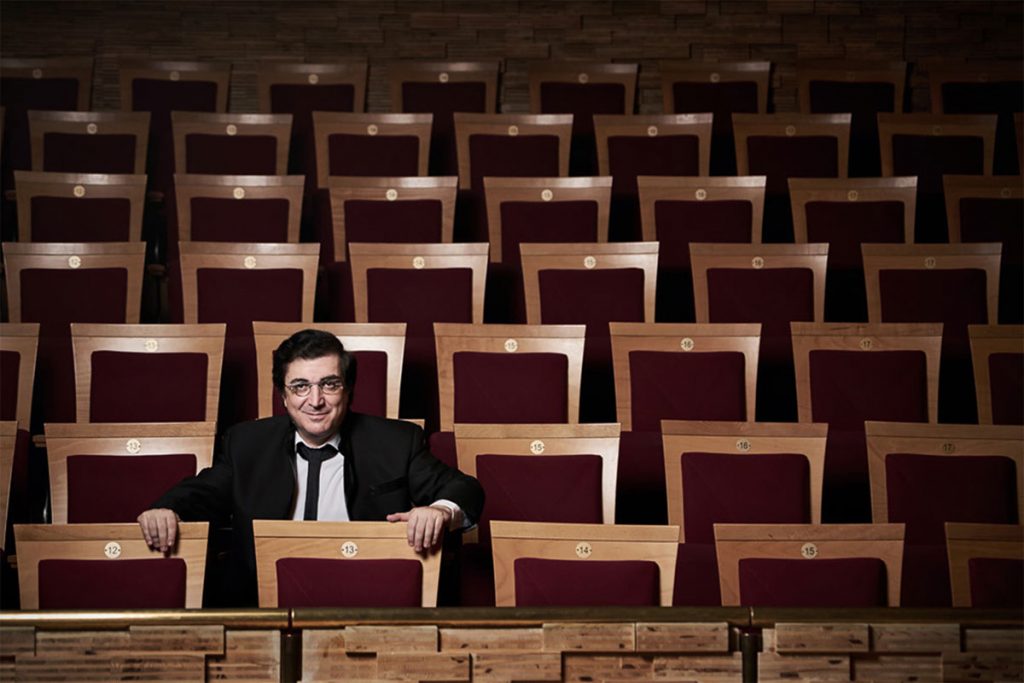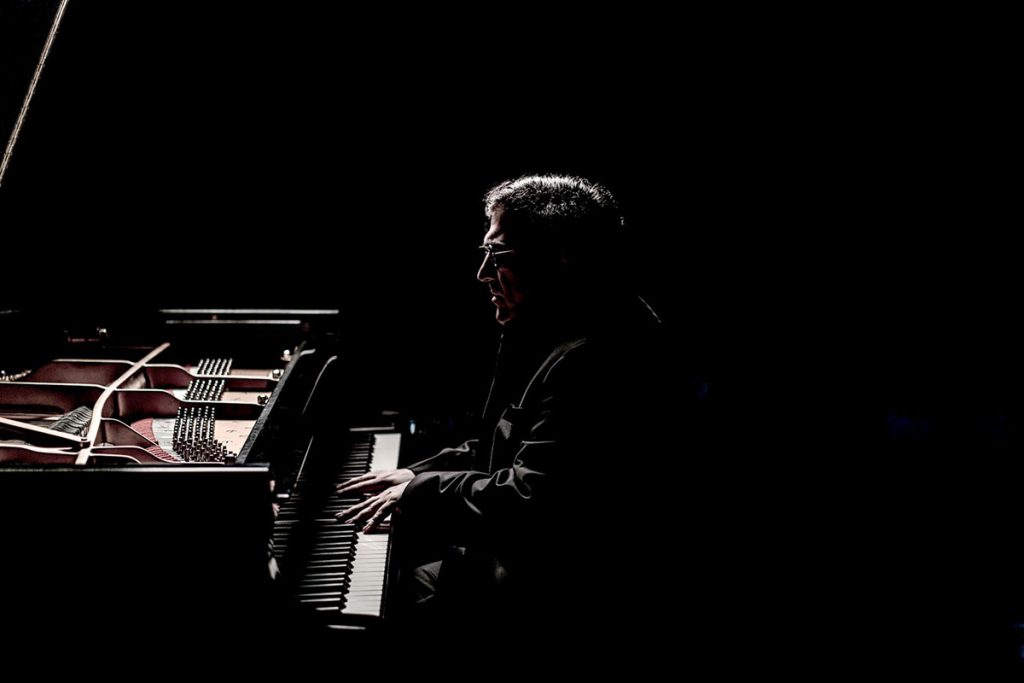By Diane Baxter
The first pieces on this program represent great composers arranging other great composers’ music. The first name is the original composer, the second the transcription composer.
Bach/Busoni Chaconne
Ferrucio Dante Michelangelo Benvenuto Busoni (1866-1924) was a child prodigy whose parents obviously loved Italian artists. He became an eminent pianist, composer, writer and teacher. At seventeen Busoni was regarded as one of Europe’s top pianists. His compositional interests ranged from Gregorian chant to controversial avant garde techniques. He described his own Nocturne Symphonique as being “woven out of nerve fibers.” It did not receive critical acclaim. Biographies of Busoni present a very talented but restless man who moved often from job to job, city to city, and continent to continent. Busoni was primarily known as a virtuoso pianist. Many of his piano roll recordings demonstrate that he surely must have practiced at home, all right. But he was a reluctant virtuoso. He thought himself cursed because he wanted to be known as a composer!
Busoni edited and arranged the music of many famous composers. Today’s spectacularly impressive piano piece, originally from Bach’s solo Violin Partita in d Minor, No. 2, BWV 1004 (1720), is Busoni’s tribute to the genius. He premiered the arrangement in Boston in 1893. Many other composers have arranged this piece, including Johannes Brahms who wrote a version for left hand alone. In one of his many letters to Clara Schumann, Brahms said: “The Chaconne is for me one of the most wonderful, incomprehensible pieces of music. On one stave, for a small instrument, the man writes a whole world of the deepest thoughts and most powerful feelings.”
Schubert/Liszt Song Transcriptions
Franz Liszt (1811-1886) was an astonishing philanthropist who gave his money and his time, donating much of his substantial fortune to charitable and humanitarian causes. The greatest piano virtuoso of his time, Liszt accepted no payment for his teaching.1 He expected his students to come fully prepared for artistic interpretation and to “wash their dirty linen at home.” In 1838 Liszt was in Venice having coffee on Piazza San Marco when he read about huge floods devastating western Hungary. Villages were swept away, crops were decimated. Pest (soon to be incorporated with Buda) suffered greatly; many people drowned. Liszt headed straightaway to Vienna to raise money. His was the largest private donation, 24,000 gulden, all from eight concerts. It was for these concerts that Liszt premiered his first Schubert song transcriptions.
Songs comprised two thirds of Franz Schubert’s (1797-1828) output. More than 150 poets are represented in his 600+ songs. Liszt described Schubert as “a bird in the air, he lived in music and sang in angelic fashion.” Through these transcriptions, Liszt significantly promoted the older composer’s work and audiences loved the pieces. Liszt included the poetry in the scores for the pianist’s context. Liszt also arranged music from Beethoven (including his 9th symphony), Berlioz, Schumann, and Wagner. This was a powerful way for him to collaborate with great musical minds. In fact, half of Liszt’s compositions are arrangements of other composers’ works.
Der Muller und der Bach is a conversation between a despondent miller and a brook which is trying to comfort him. Gretchen am Spinnrade is a young woman at a spinning wheel, daydreaming about her lover. Her spinning pauses as she recalls “his kiss.” Auf dem Wasser zu singen (to be sung upon the water) mentions “gently shimmering waves of joy.”
1When pianist Theodor Kullak died in 1882, he reportedly had made more than one million marks from teaching. Liszt read the newspaper, then commented: “As an artist, you do not rake in a million marks without performing some sacrifice on the altar of Art.”
Rachmaninoff Etudes-Tableaux, Op. 39, Moments Musicaux, Op 16
The six etudes of Opus 39 were his last important works before Sergei Rachmaninoff (1873-1943) left Russia in 1917. They were composed while he was studying the music of his friend, Alexander Scriabin. Scriabin cut himself shaving and died from sepsis from the wound. He was only 43. These somber and despairing pieces were written for a memorial concert in Scriabin’s honor. The Dies Irae plainchant from the Catholic Requiem Mass is present in some form in all of the Op 39 pieces. This represents the Day of Judgment when everyone must account for their sins. The title of these works implies pictures, paintings or scenes. Rachmaninoff often used sources outside music for inspiration, but he rarely revealed them: “I do not believe in the artist disclosing too much of his images. Let them paint for themselves what it most suggests.” These pieces are atmospheric, complex and sophisticated. While you may not be humming tunes from them as you leave, you will be left with the deep experience of having heard them.
The Moments Musicaux were written in 1896 when Rachmaninoff was 23. They are character pieces in the 19th century style. (If you have any tendency towards carpal tunnel, these are not the works for you.) No. 2 in Eb minor is virtuosic and demanding. The constantly moving left hand provides a tapestry for the melodic material in the right. No. 6 is a great example of Rachmaninoff’s love of the sonority and resonance of the piano. Except for a few measures, Rachmaninoff uses markings from “f” (loud) to ff” to “ffff”. The performer’s task is to maintain the sensitivity and strength of the music without becoming harsh. Today’s artist, Babayan, has a beautiful recording of these works.
Franz Liszt Ballade in B Minor (1853)
Liszt often turned to literature, painting, and nature for ideas. You can take your pick between two tragic tales for this piece. The first is a Gothic tale. Lenore’s fiancé has gone to battle in the Seven Years’ War but has not returned. As other soldiers return, Lenore gets more and more worked up and starts arguing with God. She accuses Him of never having done her any good. Lenore’s terrified mother prays for her daughter, realizing that such blasphemy will land Lenore in hell. At midnight a mysterious stranger arrives who resembles William – emphasis on the word “resembles.” He sweeps Lenore off on his horse, they ride through the night at breakneck speed and arrive at dawn at a cemetery. As the horse moves amongst the gravestones, the horseman loses his likeness to William and is revealed as Death – a skeleton with a scythe and an hourglass. Lenore’s wedding bed is William’s grave. She crumples to her death while dancing spirits admonish her. Don’t pick a fight with God.
Perhaps you’d prefer the second story, the Greek myth of Hero and Leander. These two lovers live on opposite sides of a strait. Every night Hero leaves a lamp burning atop her tower to guide Leander as he swims across the water. Four nights on, four laps later so to speak, a strong wind blows out the lamp. Leander loses his way and drowns. Hero spies his dead body and flings herself from the tower to be with him. Their bodies wash up on the beach in an embrace. The end. A pupil of Liszt’s claimed that this was the correct inspiration, though that is only one man’s word. Either way, this is a dark and tragic piece.
Liszt wrote this Ballade directly after he completed the monumental Sonata in B Minor in 1853. One might assume that he had finished with B minor, but apparently that was not the case. We reap the benefits in this depiction of drama, love and tragedy.
Kreisleriana, Op. 16
Robert Schumann (1810-1856) was inspired to compose this piece by author E.T.A. Hoffmann, whose character, Johannes Kreisler, is a genius composer obsessed with his own pending madness. In 1838, the year of this piece, Robert was engaged to the phenomenal pianist Clara Wieck. Clara was famous and revered by age 18 (desserts were named after her – eclair anyone? – and she was featured on Deutsche Bundesbank notes). Clara’s father refused permission to marry, but after a year in the courts the couple was allowed to proceed.
Robert had two emotional extremes in his personality which found their way into his compositions. Florestan is outgoing and vivacious, while Eusebius is introspective and dreamy. Robert invented a mediator between the two whom he called “Raro” (the name is derived from the last two letters of “Clara” and the first two of “Robert”). These personalities are present in Kreisleriana. The music swings wildly from agitation and angst to peace and happiness. Robert’s own creativity and bipolar disorder are reflected in the dramatic mood swings throughout. Each movement is a state of being, unified brilliantly into a whole.
In a letter to Clara, Robert wrote: “…imagine, since my last letter I’ve finished another whole notebook of new pieces. I intend to call it Kreisleriana. You and one of your ideas play the main role in it, and I want to dedicate it to you – yes, to you and nobody else – and then you will smile so sweetly when you discover yourself in it.” Though he wanted to dedicate it to her, he decided to avoid further disapproval from her father. It is dedicated to Chopin, who had sent Schumann a copy of his second ballade: “Yesterday a new Ballade by Chopin arrived, which is dedicated to me – which made me happier than a royal decoration,” Robert wrote.
Copyright © Diane Baxter 2022



